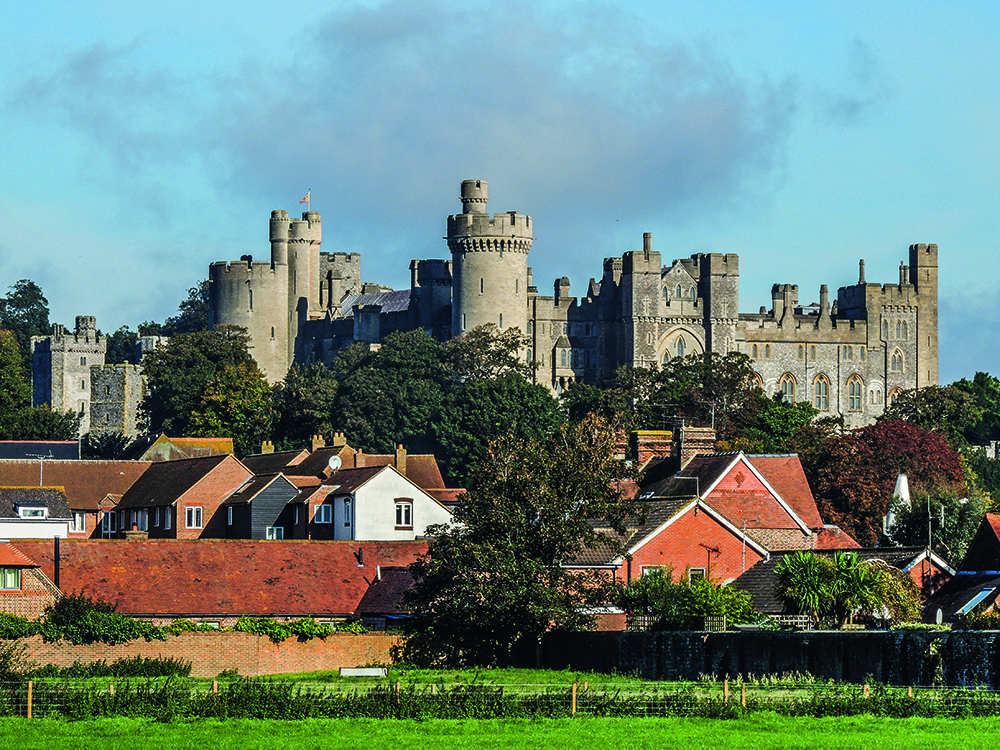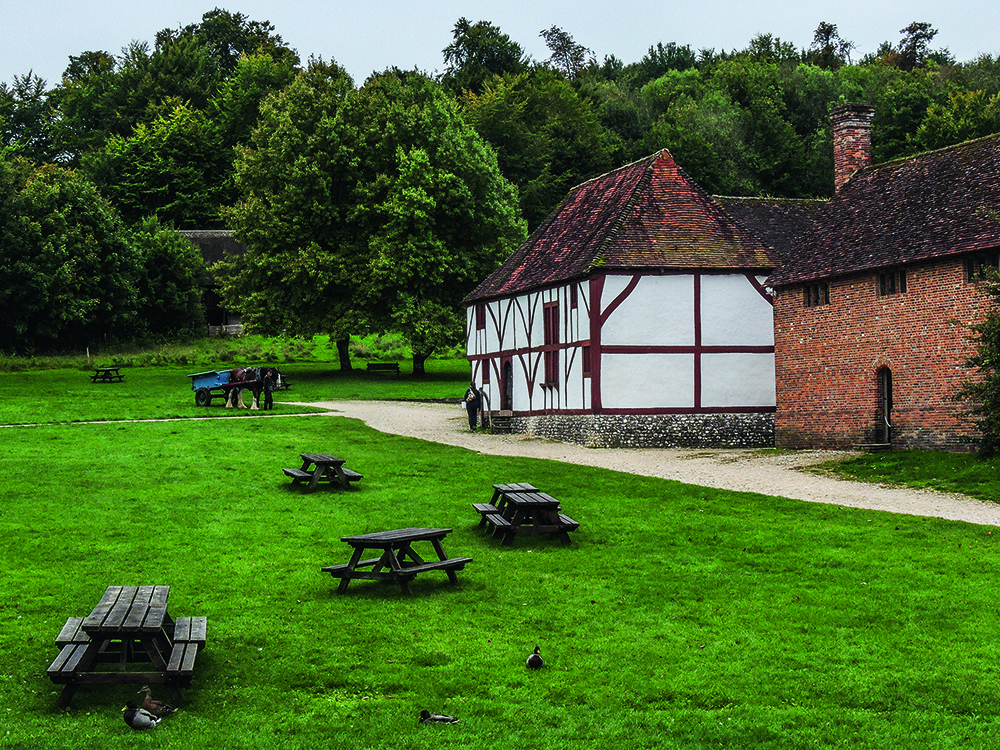Motorhome travel: Beside the sea in Sussex
See also: Motorhome Coastal Travel Guide
Wrestling with a blustery wind and the OS map at the narrow entrance to Chichester Harbour, I had a seagull’s eye view of this vast natural body of water and could visualise a sinister-looking hand. We were standing on its broken thumb – the East Head spit – and its four crooked fingers – the Bosham, Chichester, Emsworth and Thorney channels – were jabbing their fingertips into the land.
.jpg)
Such is the force of the Solent and prevailing winds that, 250 years ago, East Head projected out across the mouth of the harbour. Its flimsy sand and shingle habitat has since dramatically moved and now points directly into the estuary.
Connected to the main arteries (channels) of this estuarine basin is an intricate network of veins and capillaries (narrow inlets and creeks) that rhythmically circulate the harbour’s salty lifeblood. Inhaling, the harbour becomes a mecca for watersports activities and is home to several marinas, 14 sailing clubs and over 10,000 registered boats. Then, when refreshed, it exhales to expose bare mudflats and salt marsh that plate up a fine dining experience for thousands of birds.
Straddling the Hampshire and West Sussex borders, Chichester Harbour lies on a coastal plain squeezed in between Hayling Island to the west and the cathedral city of Chichester to the east. Framed by the chalk ridge of the South Downs National Park, it’s a low-lying landscape that holds a coveted Area of Outstanding National Beauty gong and one of the few parts of the Channel coastline to have escaped development.
Along the southern edge of the harbour at Birdham Pool, we reflected on the strange hours the millers must have worked at its eighteenth century tidal mill; after all, the tide waits for no man. The ‘pool’ has since been upstaged by its flashy, neighbouring 1960s son at Chichester Marina. Having the capacity to moor over 1,000 sleek and shiny boats in neat rows, it exudes a distinct flavour of the south of France.
In contrast, a mile further inland along the Chichester Channel, we sampled a different taste of the sea at Dell Quay’s waterside pub. With the harbour plug pulled out, our window seat offered us the opportunity to enjoy the locality’s ragtag traditional charms against the vibrant backdrop of the setting sun and with a lovely plate of battered fish and chips. The Romans probably established Dell Quay as a landing place and military base which, after the Norman Conquest, became Chichester’s main port.

At its northern end, the Chichester Channel flows into the Fishbourne Channel where, at today’s village of Fishbourne, our ancient invaders built a lavish palace. It’s the largest known Roman residence north of the Alps and displays a rich legacy of the luxurious lifestyle of its residents, including a superb collection of in-situ mosaic floors. Adjacent to this opulent home, the Romans established a trading hub – Noviomagus Reginorum – now Chichester.
At the city’s heart is a medieval market cross. Radiating out from this are four streets and their respective gateways and sitting within a 1½ mile ring of wall. Wandering around this defensive structure we noted that each quadrant has its own distinctive flavour. The cathedral, including the Bishop’s Palace gardens, was the show stealer.
Close to the city centre we joined the Chichester Ship Canal at its basin. The canal was conceived as part of a grand scheme to create a commercial transport corridor between Portsmouth and London. These days all that remains of what was the Portsmouth & Arundel Canal section is a four-mile stretch, which we followed inland to the Hunston Bridge. It was here, in 1828, that the landscape artist, JMW Turner, painted his famous Chichester Canal looking directly along the waterway towards the city’s cathedral spire.
From the bridge, the canal then turns 90 degrees to meet the Chichester Harbour. On the northern side of the harbour, tucked into an inlet branching off from the Bosham Channel, is the village of Bosham. Looking like a Constable canvas or as if out of a Hardy novel, it’s a rural idyll of exquisite vistas and strong connections to eleventh century history. Warning signs about flooding every tide around Bosham must be heeded by pedestrians and for parking. The water flows very quickly and we had to turn back on our walk.

Standing on Thorney Island (which is actually a peninsula wedged in between the harbour’s Thorney and Emsworth channels), we were on a military base for the British Army’s firepower. Hoping that none of the Royal Artillery Gunners had their fingers on the trigger, we marched around the headland’s eight-mile shoreline. Due to the military presence, access is restricted to this coastal path and you have to press a buzzer at the imposing gates at either end of the MOD land and answer a few basic questions. But don’t let any of this formality put you off as it’s all very friendly.
Just east of Chichester Harbour is the Goodwood estate, home turf to the Dukes of Richmond for 300 years and which has become synonymous with horsepower – gee-gees and wheels – on its racing tracks. From the grandstand of Trundle Hill, like many racing fans we gambled on a free view of ‘Glorious Goodwood’.
It was back to the simple life at the nearby Weald and Downland Living Museum. This open-air museum depicts rural life in southeast England through the lens of rescued buildings from Anglo-Saxon to Edwardian times. It certainly made us appreciate our modern comforts and it was so refreshing to see schoolchildren, dressed in period costume, excitedly revelling in old-fashioned outdoor games without a distracting screen in sight.
Another of the local ducal families, indeed the premier duke and earl of England, is the Duke of Norfolk. Approaching his home town of Arundel, the skyline was dominated by its stunning castle and majestic cathedral. It’s a monumental statement of aristocratic grandeur fusing medieval fortifications with Victorian Gothic architecture. From the packed town centre at the foot of the Norfolks’ lofty seat, we rambled along the River Arun to the flower-decked Black Rabbit pub to linger over an al fresco coffee and a distant view of Arundel Castle.
Seeking to dodge the gloomy weather, we switched back towards Chichester Harbour. It’s actually one of three sizeable harbours on the Manhood Peninsula (!). At its southern tip our spirits were energised by the radiating warmth and colour of the late afternoon sun across Pagham Harbour. On the RSPB’s nature reserve, we tracked the harbour’s edge to the double shingle spits at its slender opening to the sea. The sails and trails of Sussex had been so easy on the eye and, with our seascape horizons broadened, we returned home with oceans of energy left in our well-travelled legs.






.jpg)


Recent Updates
Campsites in the Lake District: our pick of the best
This National Park is one of the most iconic locations in the UK for outdoor adventures, which makes camping in the Lake District an absolute must - ...
Campsites in Kent: our pick of the best
This is our guide to the best attractions and top campsites in the Garden of England, from the iconic cliffs ...
Camping guide to trailers
Trailer stash or trailer trash? Being able to carry lots of other gear when you go camping isn’t such a bad ...
Campsites in Cornwall: our pick of the best
Our selection of the best campsites for exploring one of England's most popular counties ...
Campsites in Devon: our pick of the best
The best campsites for discovering this popular southwest county ...
Coastal campsites: our pick of the best in Britain
Enjoy being beside the seaside with our choice of the best coastal campsites in England, Scotland and Wales ...
Best family campsites in the UK
Our pick of the best campsites for a family holiday ...
Campsites in Wales: our pick of the best
Our selection of the best campsites for exploring wonderful Wales ...
Top campsites near cities for weekend breaks
For a multitude of things to see and do all year round, head for the city with our top campsites for city ...
Campsites open all year: our pick of the best
Enjoy holidays year-round with this selection of campsites that are open all year ...
Other Articles
Campsites in Scotland: our pick of the best
Our choice of the top campsites to enjoy a touring adventure in Scotland, from the Highlands to the wild Scottish coast ...
Yorkshire campsites: our pick of the best
Perfect for exploring Yorkshire, check out these high-quality campsites ...
Campsites in Dorset: our pick of the best
From the stunning coastlines to beautiful countryside, Dorset is perfect for a camping holiday ...
Dog-friendly campsites: our pick of the best
The best campsites for a holiday with your four-legged friend ...
Theme park campsites: our pick of the best
If your idea of a top family holiday is strapping yourself in for thrills and spills on some of the best UK ...
Adults-only campsites: our pick of the best
For a grown-ups-only holiday, check out our recommended sites just for adults ...
Location guide: heavenly Hampshire
Hampshire – a glimpse of a wonderful combination of coast, countryside and city. This attraction-rich region ...
Fishery Creek Touring Park: campsite review
A campsite review of Fishery Creek Touring Park, Hampshire ...
Camping with dogs
Camping is for the whole family – including the four-legged members. Follow our tips for trouble-free camping ...
Location guide: Cornwall attractions
What to see and do in Cornwall ...